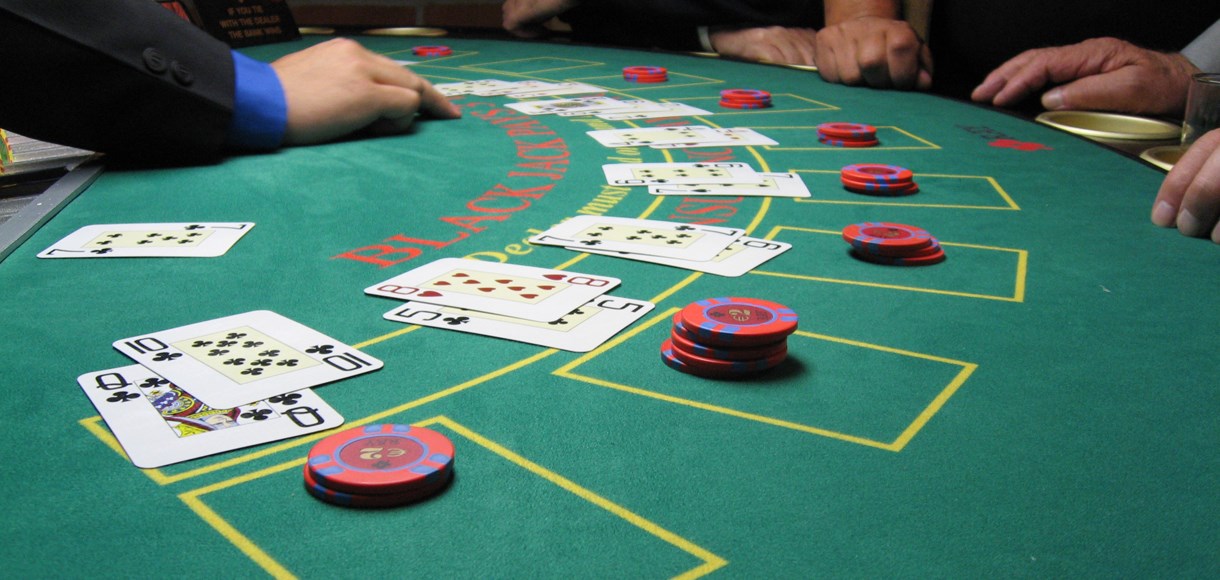Blackjack strategy 101: How do you split in blackjack?

Explore how to get more from your blackjack bets with the right split. Splitting pairs can mean the difference between a losing run and a winning one.
Splitting pairs is a big weapon in a blackjack player's arsenal. It gives you another chance to beat the dealer and double your win.
Splitting is a good way for players to get an advantage. But it's important to split the right hands.
Let's see how you can make the best use of the split in blackjack.
What is splitting in blackjack?
Most variants of online blackjack let you split pairs. If you get dealt two cards the same (a pair) you have the option to split the cards and form two new hands. You then carry on betting on both hands.
When the cards are split, you place a second stake on each hand, equal to the starting bet. A further card, or cards, is added to the hand and the player continues as usual by hitting (taking more cards) or standing (taking no further cards). A double down can also be made, where one extra bet is made for a single, additional card.
When to split pairs in blackjack?
Any pair can be split in blackjack. But should you split every time?
Well, not always. Splitting is a fine art and can depend on what the dealer's up card is.
Always split when:
You get aces: Aces are rare in blackjack. With so many 10-value cards in the shoe, hitting 21 is easier with an ace showing. You should always re-split your aces too.
Playing two aces as one hand is a poor strategy. Aces are worth either 1 or 11. Hitting a picture card on 2 (1 & 1) will give you 12 at best - not a great total to hit again with.
You get eights: Two eights make 16, and if the dealer is able to stand on 16 you will, at best, likely end up with a 'push' (tie the hand). It's better to play the two eights separately and aim for two hands worth 18 each. Like aces, always re-split your eights.
Don't split when:
You get nines or tens: If you have 9 & 9 (18) it's already a strong hand to beat the dealer with. If you split them, you are counting on hitting a ten or ace to make a marginally stronger holding.
The same goes for tens. 20 is a great hand to start with and is hard to improve upon if you split. There are some times you should split high pairs if the dealer's up card isn't very good, though.
You get fives: Two fives make a 10, and this is a great hand for doubling down on - if you are allowed. Splitting fives and making, for example, 15 and 15 puts you in a bad position.
You get fours: 4 & 4 makes 8, and this is a good starting hand to hit to 18. Splitting fours just gives you two low hands to begin again with. Hitting a 10 on one of them only gives you a 14 to work with - a tricky spot.
Splitting v the dealer's up card
You can also make a decision to split reasonable hands when the dealer shows a certain up card.
Here are three examples:
Dealer: 2, 3, 4, 5, 6, 7
You: 2-2, 3-3, 7-7
Decision: SPLIT
2-2 (total 4), 3-3 (total 6), and 7-7 (total 14) are awful hands for the player. They don't draw to much, so they are worth splitting when the dealer also has low cards. Take your chances on forming two new marginal hands rather than one bad one.
Dealer: 2, 3, 4, 5, 6
You: 6-6
Decision: SPLIT
Sometimes in blackjack, you will win when the dealer busts. That's why splitting 6s is a good move for the player. Drawing a 10 to make 16 gives you a strong hand against a dealer who may have to hit again and go bust.
Dealer: 2, 3, 4, 5, 6, 8, 9
You: 9-9
Decision: SPLIT
While nines are generally bad for splitting, they can be good if the dealer looks like getting a strong hand (18, 19) or going bust (having to hit on 12, 13, 14, 15, or 16).
Differences in blackjack variants
Please be aware that there’re several variants that can alter your split. For example, the blackjack variant Super Fun 21 has a bonus for making a 21 with five or more cards. Splitting is a good idea if you get low cards.
Elsewhere, multi-hand blackjack gives you the chance to play five hands at the same time. It's a good opportunity for splitting pairs across multiple hands.




































